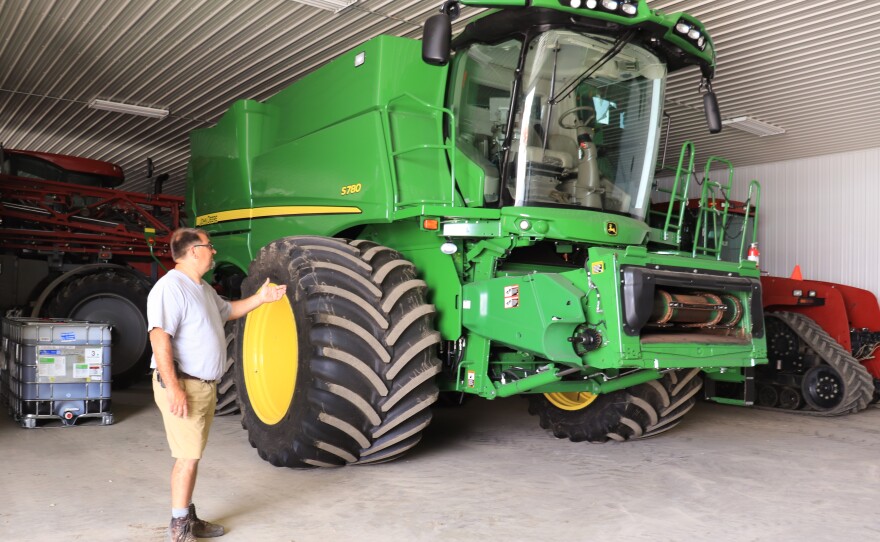At Green and Sons a little outside Marysville, they’re laying down new gravel to make more space for showing off farm machinery. But at the moment, Mark Marshall explains their stock on hand is pretty thin.
“Last year before COVID hit I think we had about 15 tractors on the lot, used, and this year like I said we’ve got four,” Marshall said. “So we’re always looking to find new tractors and stuff but it’s hard to find anything.”
He points out a corn planter, hay wagon and a disc chisel, but he’s quick to note all three are geared toward farmers who are just starting out, and working smaller plots.
“I mean back in the day,” he said, “you used to be able to drive around, ‘ah, this has been setting there for a while, do you want to sell that? Bring it in,’ stuff like that, or even auction, it’s just not out there.”
Last year, COVID-related shutdowns helped save lives. But those closures came with tradeoffs that are still playing out around the country. There’s a complex web of suppliers that play a role in each tractor or combine rolling off the assembly line. It takes time to that network up and running again.
The effects extend beyond the Ag market, just have a look at used car lots. Components like computer chips are in short supply, which delays the production of new models. Those delays are forcing used prices higher. CarGurus maintains a national index of used car listings. In the last 90 days, their index is up 15%. Year over year, it’s up 27%.
Ohio State ag economist Barry Ward said farmers looking for equipment right now will see a similar trend, pay a premium, or get ready for a long wait.
“For those producers who are ordering new combines new tractors they’re going to have to wait months before they receive delivery of the new equipment,” Ward said. “And again, it trickles down to the used equipment, and we’re seeing shortages there as well.”
He explains crop farmers ended 2020 surprisingly well, with commodity prices up and federal subsidies helping bolster the bottom line as well. Across the country, farm income rose 43%. With that kind of cash on hand, Ward said many started looking to invest in upgrading equipment to offset their tax liability, the same way individuals might add a bit of extra cash to a 401k at the end of the year.

In the Union County village of Richwood, Sawyer Parrott from Parrott Implement, said with new equipment unavailable, the market has turned upside down, with used equipment fetching higher prices than new.
“Auction prices are now $30,000, $40,000 higher than what you could buy something at an equipment dealer’s lot. They have now surpassed retail value,” he explains. “If I had 15 row crop tractors, between 250 and 400 horse sitting out there they wouldn’t be—two days, they’d be gone.”
But Mike Krawczyk is a bit skeptical. He farms about 4,000 acres just up the road, and while he acknowledges prices are up, he argues it’s not that far outside the norm.
“I think you can find equipment, you may have to go a little farther, pay a little more trucking, but it’s out there,” Krawczyk insists. “Good used equipment is out there. Is it bringing more money? Yeah. But supply and demand.”
As an example, Krawczyk notes he bought a combine in January. He had to ship it in from Minnesota, but even so, he feels like he came out ahead on the deal.
Meanwhile, market watcher Greg Peterson from Machinery Pete comes down closer to the equipment dealers. In his latest update, he says the first quarter in 2021 is the second biggest jump he’s seen since he began tracking the market 20 years ago.
The report highlights two tractors—same model, same wear and tear—one from 2015 and the other from 2018. The newer one sold last year for $182,000. The older one sold this year for $25,000 more.




